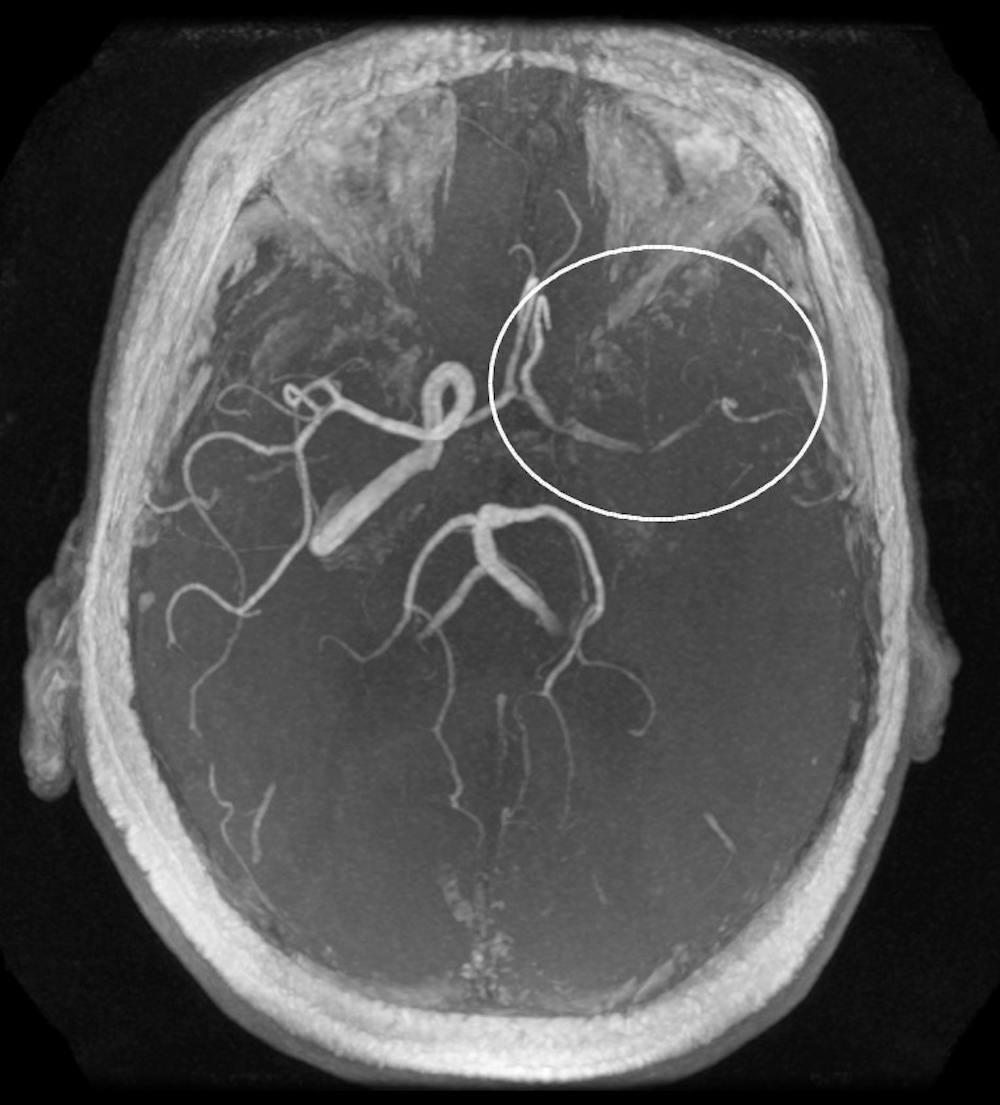Researchers at the University and around the world who are members of the National Institute of Neurological Disorders and Stroke, the Stroke Genetics Network, or SiGN, and the International Stroke Genetics Consortium, or ISGC, have completed the most comprehensive review of the human genome involving strokes. Neurology Prof. Bradford Worrall led the effort at the University.
Ischemic stroke can occur when an artery that normally brings fresh blood from the heart and lungs to the brain is blocked. This can cause neurons in the brain to stop working and put a person in a critical medical condition in merely a few minutes.
While many risk factors of stroke have been known, the genetic causes have not been studied as extensively.
“Stroke is a very complex disease that involves both genetic and environmental risk factors,” Asst. Neurology Prof. Stephen Williams said in an email statement. “The bridge between these two distinct aspects of risk are called biomarkers. These might be something that is circulating in our blood that would be a red flag to doctors. Both genetic and environmental factors can influence a person’s levels of these biomarkers and they can be just warning signals or meaningful targets for new therapies.”
The researchers and doctors participating at the University are members of both SiGN and ISGC, Williams said.
Worrall and Assoc. Public Health Sciences Prof. Michele Sale formed ISGC to research the link between strokes and genetics. Members of the organization are from all around the globe, including Egypt, Switzerland, Zambia and Costa Rica. Worrall said the 20th workshop will take place in Milan, Italy.
Worrall and his researchers completed genome-wide association studies, scanning markers across complete sets of DNA or genomes of people and look for variability.
“We take a group of people, in this case people with stroke, and compare them to another group of people who have not had stroke and look across all of their genomes and look at their regions that are different in the two groups,” Worrall said.
Williams, who worked as a molecular geneticist, said other reviews of the genome have not included more than the number of individuals included in this study nor have they studied the variety of stroke aspects studied in this project. This is what makes the review the largest of its kind.
“This was a collaborative effort,” Worrall said. “There were 10 principal investigators, four lead analysts on the analysis team [and] two of us chairs of phenotyping committees, so it really was a massive effort and it is really important to acknowledge the work of everyone that contributed to it.”
The comprehensive project required collaboration between people of various backgrounds and departments.
“We have people like me who are clinician scientists who are involved in the phenotyping, the characterizing of the disease and subtypes we are looking at,” Worrall said. “Then we had people who were primarily doing the genotyping, the identification of the genetic variants and then another group who were the analysts who helped digest this massive amount of information and help us come up with our main findings.”
The Human Genome Project was completed 15 years ago, and since then, many advances have been made. Recently developed technologies can sequence a genome in a few hours. Still, it can take years to complete a project this large due to all of the steps involved.
The team had to re-characterize all the cases using a single system for stroke subtyping, complete genotyping, then go through a series of quality control measure, and finally, they had to complete the analysis. The project took five years after the grant was received, but the idea for the project started in 2007, Worrall said.
“This paper included almost 17,000 individuals,” Worrall said. “We even followed that up with an additional lookup in almost 21,000 additional cases. This means that this investigation included almost 28,000 stroke cases total.”
Identifying a gene is a big step in learning more about a disease. It can tell that there is still more that needs to be done to come up with a therapy.
“The next steps of taking this information from the genetic study is to get a window into the biology,” Worrall said. “We need to do functional studies where we verify that this is indeed the gene. … It is possible that it could be a neighboring gene.”







